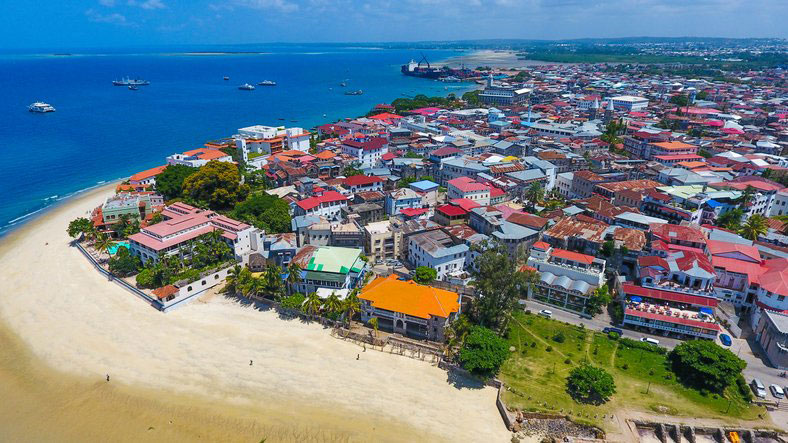
Daily Tour
Travel
1+ Person
Any Language
Zanzibar Island is one of the most historic Indian Ocean islands, awash with atmosphere, intrigue, and idyllic beach experiences. There are masses of accommodation options across the price spectrum, and plenty to see, do and discover. As the birthplace of the Swahili, site of Sultans' Palaces and renowned for its spice plantations, the little island republic of Zanzibar features larger-than-life on the world map and is a must-see at the end of any African trip, but is especially great when added onto a Tanzanian safari.
Attractions
There are some fabulous beaches on the islands of Zanzibar, and many choices for an ideal spot to sit back and watch the white dhow sails cruising the startling blue waters of the Indian Ocean. Whether it is for a Zanzibar holiday, honeymoon or some post-safari relaxation; whether you prefer the blissful privacy of a private island or the amenities of a larger hotel; and whatever your preferred activities, there are good options for every traveler.
Stone Town
Also known as Mji Mkongwe. Stone Town is the ancient part of Zanzibar City, which is itself capital of Unguja island. Visit and you’ll get a perfect picture of how the old Swahili trading towns of East Africa look, sound, feel, taste and smell. With Islamic prayer calls on the air and atmospheric winding old alleys redolent of spices at every turn, this settlement is the heart and soul of the island. Admire elegant stone buildings, sip chai and coffee from busy vendors, and eat fresh fish dinners laced with coconut. Stone Town mixes Persian, Arabic, Indian and European legacies to create a destination to remember.

Forodhani Market
In the thick of Stone Town, as the afternoon dims towards evening, Forodhani Gardens transforms into a circus of calorific magnificence: welcome to Zanzibar’s spectacular night-time food market, a whirl of chefs juggling spitting pans. The aromas are fabulous, and the range of dishes is extraordinary. Bring a large appetite. You might be familiar with some of the offerings – kebabs of tandoori lobster, say, or falafel as big as your fist. Our favourites are the fish plates served with fried potato balls, naan and samosas. You won’t need to eat for a week – or maybe just not until the same time, same place tomorrow.

Prison Island
Prison Island is the common word known but it is also called Changuu Island. It draws the beachy faithful here to sunbathe, splash about in transparent blue waters just perfect for snorkeling, and say hello to the giant tortoises descended from those brought here from Seychelles more than a century ago. In a dark chapter of Zanzibar’s history, the island was once a place where enslaved people were kept – which explains the unofficial name.

Nungwi
You’ve come to the Indian Ocean to sink your toes into coral sands as pure and pale as caster sugar – and the place to do that is Nungwi, on the northwesternmost tip of Zanzibar. There’s a DoubleTree Resort by Hilton here, plus a few lodges immersed in tropical gardens, beach cottages and sea-view restaurants, yet the place has not fallen victim to swarms of international tourists, and islanders mingle casually with visitors. The water sports are plentiful, as are sundown cruises, and you can organise deep-sea fishing excursions in search of leaping sailfish and mean-looking bull dorado.

The Rock
On the unassuming peninsula of Michamvi, on the east coast of Unguja island, is an icon of culinary excellence. The Rock restaurant began as a lifeline for subsistence fishermen, and has evolved into arguably the best dining experience in Zanzibar. There are only 12 tables, and it’s often fully booked, but if you can get yourself a reservation your taste buds will thank you. Fish carpaccio with coconut sauce; tambi(local Swahili spaghetti) with stir-fried fish; and perhaps a bottle of crisp South African rosé. Life’s a beach – and then you dine.

Jozani Forest
Most visitors to this vast and scenic spread of green, a biodiversity hotspot that’s part of Jozani Chwaka Bay National Park, come in hopes of sighting the rare red colobus monkey. Thousands of years of isolation from sibling species on the African mainland have made this simian specimen a special beauty, with distinct cries and vibrant coats. There are nature trails through shafts of sunlight where butterflies flicker, a boardwalk that descends into mangrove swamps and the very faintest chance of a leopard sighting – although don’t get your hopes up too much, as the last was decades ago.
